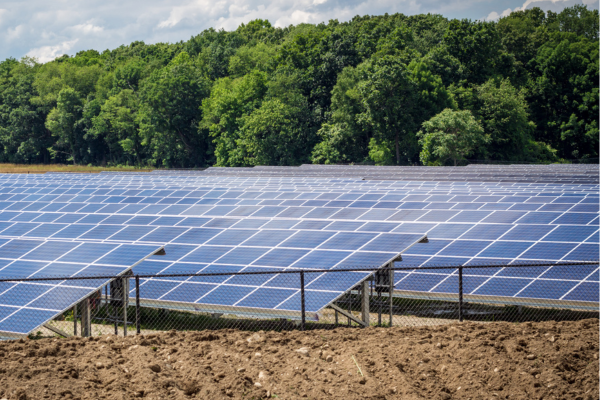Geotechnical Engineering in Solar Fields: Tackling Expansive Acreage for Sustainable Energy Projects
As the demand for renewable energy has steadily risen, solar has become a popular source for many private and public organizations looking to supplement their energy needs.
Unlike wind turbines, solar can be placed on roofs in smaller areas and are generally less expensive to install and maintain.
While geotechnical engineering principles remain consistent across various projects, there are distinct differences in solar fields compared to other types of construction. In this blog post, we will explore how geotechnical engineering differs in the context of solar fields and why addressing these unique challenges is essential.
Expansive Acreage
The most obvious difference between a solar field and geotechnical engineering for a building is that solar fields often cover a large amount of land. In some cases, the field may cover several or hundreds of acres.
Typically, a local geotechnical engineer experienced in the area is the best choice to recommend the required depth and number of soil borings required to accurately assess the soil and other geologic conditions such as rock elevations, seismic considerations, groundwater, and other variables to provide earthwork and soil parameter recommendations needed for the design.
Too many borings lead to geotechnical costs that will be higher than necessary. Too few borings could lead to missing areas where the soil is less suitable or other varying conditions, leading to cost overruns during construction or solar panel support foundation issues. An experienced geotechnical engineer can help recommend a suitable number of borings and provide design recommendations to suitably assess the soil throughout the project without going overboard and blowing the budget.
Soil resistivity for grounding purposes
Large-scale solar arrays can sometimes have a substation associated with them. Any time a substation or transformer is present, grounding is also required.
Much like a grounding rod at your house, every electrical feature has a rod to ground the electrical current so the electrical system won’t exceed its capacity. In order to be designed efficiently, geotechnical testing is used to determine the resistivity of the soil.
Soil resistivity is a measure of how much a specific volume of soil resists the flow of electrical current. It is typically expressed in ohm-meters (Ω·m) and varies based on factors such as soil composition, moisture content, temperature, and compaction. The resistivity value represents the soil’s ability to conduct or insulate electrical current.
Dry sands, for instance, have more void space than saturated clay and are less conductive to electricity.
Corrosivity
Finally, geotechnical testing for solar fields will often include a corrosivity parameter. Because solar fields are often installed on metal or concrete structures within the ground, determining the corrosivity of the soil can help determine the best materials to be used for support.
If soil is more corrosive than usual, a thicker metal structure with a sacrificial thickness is usually used. That way, as the metal or concrete corrodes the sacrificial portion, the remaining structure is still strong enough to bear the required load.
Soils with a high amount of sulfate are usually more corrosive. To assess the corrosivity of the soil accurately, geotechnical engineers often conduct laboratory tests to determine the soil’s sulfate content and other corrosive elements. These tests help identify the corrosivity level and guide decisions on the design and materials used in the solar field’s structural elements.
Environmental Considerations
Because solar fields are typically situated in open, rural areas with a focus on minimal environmental impact, land owners must also consider the ecological sensitivity of the site.
Often, CTL’s geotechnical engineers will work closely with the environmental team to ensure an accurate Environmental Site Assessment. In some cases, soil erosion, habitat disruption and water runoff will need to be carefully managed.
Solar Array Project at the Indianapolis International Airport
Recently, CTL worked with the Indianapolis Airport Authority on an expansion to their current solar array. Currently home to the largest solar farm on any airport property in the world, 183 acres on IND airport property currently house 87,478 solar panels.
CTL provided geotechnical engineering for an upcoming expansion, providing many of the soil assessments detailed above. Additionally, airports provide another unique challenge, which is placing the solar fields in areas where you can avoid ocular impact – or glare that might affect a pilot’s ability to see during takeoff and landing.
CTL also provided recommendations for the types of foundations suitable for the proposed structure, including pertinent design parameters such as end-bearing pressure, seismic site classifications based on Standard Penetration Testing, unit skin friction, passive earth pressure, and L-pile parameters.
To learn more about CTL geotechnical engineering, please reach out using the form below.

